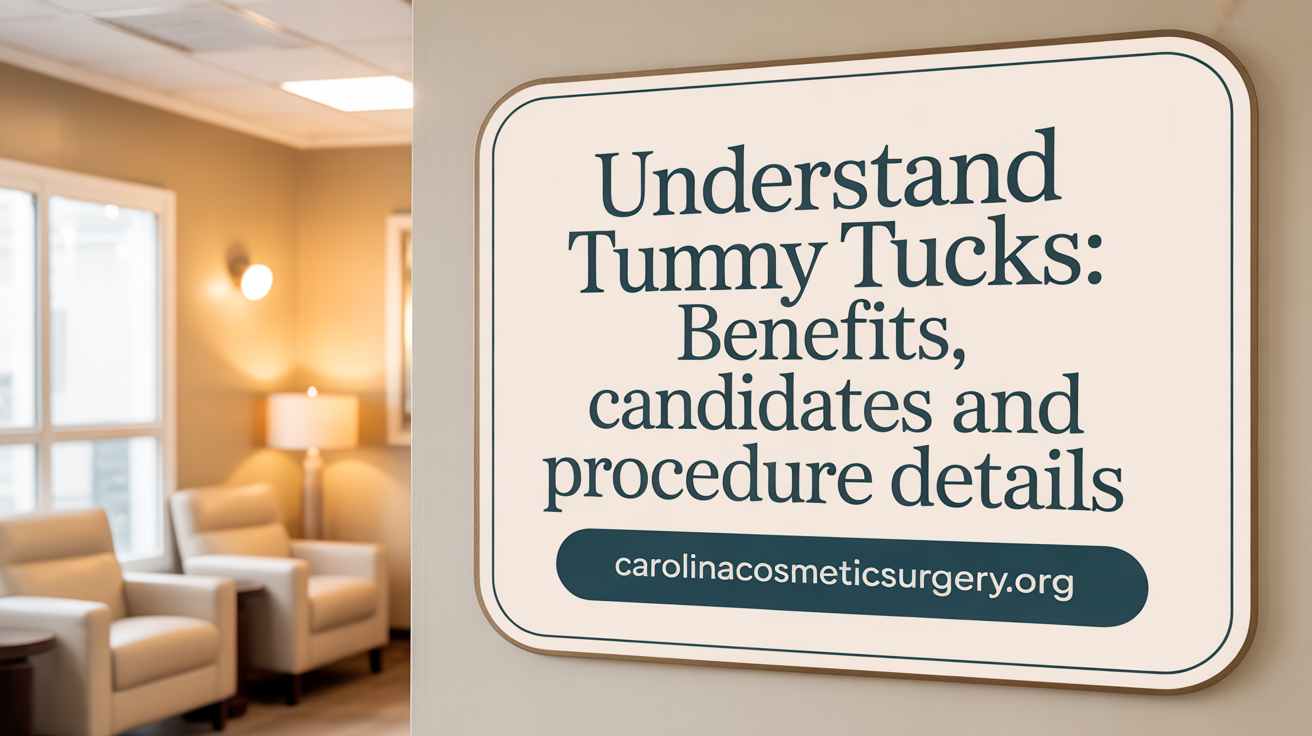Discover the Art and Science of Body Contouring
Body contouring continues to surge in popularity as more individuals seek to refine their physiques beyond what diet and exercise can achieve alone. This comprehensive guide unpacks the essentials of body sculpting—exploring the surgical and non-surgical methods that reshape the body, with an emphasis on tummy tucks, liposuction, and Brazilian Butt Lifts (BBLs). From understanding what body contouring really means, to the risks, benefits, techniques, and recovery protocols, this article aims to educate and empower those considering improving their body aesthetics through these transformative procedures.
Understanding Body Contouring and How It Differs From Liposuction

What is body contouring and how does it differ from liposuction?
Body contouring is a collection of cosmetic procedures designed to reshape and improve the appearance of specific areas of the body. It aims to create a more balanced and proportionate figure by removing excess fat and skin and tightening the underlying tissues. These procedures can be tailored to meet individual goals, whether to achieve a more feminine, masculine, or natural look.
Liposuction is one of the most common surgical techniques within body contouring. It involves making small incisions through which a thin tube called a cannula is inserted to suction out stubborn fat deposits from areas like the abdomen, thighs, flanks, arms, or neck. This method provides immediate and significant fat reduction, resulting in a more sculpted appearance. Liposuction can be performed using various technologies such as tumescent, laser-assisted, or ultrasound-assisted methods, each aiming to improve fat removal efficiency and reduce recovery time.
In contrast, body contouring also includes non-surgical options such as CoolSculpting (cryolipolysis), which freezes and eliminates fat cells gradually, and laser lipolysis that uses laser energy to melt fat. These non-invasive treatments typically have minimal downtime, less discomfort, and produce subtler results over time. They are suitable for individuals seeking minor improvements or those who prefer a less invasive approach.
Difference between liposuction and body contouring
| Technique | Invasiveness | Results | Recovery Time | Suitable for | Goals |
|---|---|---|---|---|---|
| Liposuction | Surgical, invasive | Immediate, significant | Longer (weeks) | Individuals with stubborn fat deposits looking for substantial changes | Precise fat removal and body shaping |
| Non-surgical procedures | Non-invasive, minimal discomfort | Gradual, moderate | Shorter (days to a week) | Those seeking minor body improvements or avoiding surgery | Fat reduction without surgery |
Surgical vs. non-surgical body contouring options
Surgical methods like liposuction and tummy tucks allow for large-volume fat removal and skin tightening, making them suitable for patients with excess fat and loose skin, often after significant weight loss or pregnancy. These procedures typically require anesthesia, longer recovery periods, and carry higher risks but provide more dramatic and lasting results.
Non-surgical options, including CoolSculpting, SculpSure, and RF body contouring, offer less risk and downtime, ideal for those who want to target minor bulges or prefer less invasive treatments. Results generally appear gradually over several weeks or months, and multiple sessions might be necessary.
Suitability and goals for different techniques
Choosing the appropriate body contouring method hinges on individual goals, body type, health status, and expectations. Surgical options are better suited for patients with significant fat deposits or loose skin who desire immediate and noticeable results. Non-surgical procedures are suitable for individuals close to their ideal weight seeking subtle improvements with minimal recovery.
A consultation with a qualified specialist is essential to assess candidacy, discuss goals, and craft a personalized treatment plan. Advances in technology continue to refine both surgical and non-surgical methods, expanding options for diverse needs and preferences.
The Fundamentals of Liposuction: Techniques and Target Areas

What are liposuction procedures and how is it performed?
Liposuction is a popular cosmetic procedure designed to sculpt and contour the body by removing stubborn fat deposits. It involves making small incisions through which a thin, hollow tube called a cannula is inserted. The cannula is connected to a vacuum device that suctions out excess fat beneath the skin. Various techniques exist, including traditional liposuction, the tumescent method, and laser-assisted or ultrasound-assisted liposuction, each aiming to improve safety and effectiveness.
Which areas are commonly treated with liposuction?
Liposuction is versatile and can target multiple body regions to enhance shape and proportions. Commonly treated zones include the abdomen, flanks (love handles), thighs, arms, neck, and calves. These areas often accumulate fat resistant to diet and exercise, making liposuction an effective option for body contouring.
How has liposuction technology evolved over the years?
The history of liposuction began in the early 20th century with initial, less refined methods. Major breakthroughs came with the development of the 'wet technique' in 1977, which involved injecting fluids to ease fat removal, and later, the 'tumescent technique' in 1987—using a local anesthetic and fluid to reduce blood loss and improve safety. Technological advances such as laser, ultrasonic, and laser-assisted liposuction have further enhanced precision, reduced trauma, and shortened recovery times.
What are the safety considerations and risks associated with liposuction?
Liposuction is generally safe when performed by a qualified surgeon, with a complication rate around 2.4%. Risks include contour deformities, seromas, hematomas, infections, and in rare cases, fat embolism—a serious complication where fat enters the bloodstream. Proper patient selection, surgical technique, and postoperative care are essential to minimize these risks.
How is liposuction used alongside other body contouring techniques?
Liposuction often acts as an adjunct to other procedures such as tummy tucks, breast augmentation, or fat transfer surgeries like the Brazilian Butt Lift. By removing fat from designated areas, liposuction improves overall body proportions and enables more natural results in combined treatments. Integrated procedures provide comprehensive body shaping and can streamline recovery, producing a balanced, aesthetic silhouette.
Tummy Tuck Explained: What It Is and Who Should Consider It

What is a tummy tuck and what are its goals?
A tummy tuck, officially called abdominoplasty, is a surgical procedure designed to improve the appearance of the abdomen. Its main goals are to remove excess skin and fat, tighten weak or separated abdominal muscles, and create a smoother, firmer midsection. This procedure is especially beneficial for individuals who have experienced significant weight loss or pregnancy, which often results in loose skin, stretch marks, and muscle separation.
How is the surgery performed? What are the variations?
The procedure involves making an incision above the pubic area, from hip to hip, allowing the surgeon to lift and remove excess skin and fat. The abdominal muscles are then tightened by suturing them in their new position. There are different types of tummy tucks based on the extent of correction:
| Type | Description | Typical Incision Length | Main Focus |
|---|---|---|---|
| Full Tummy Tuck | Addresses the entire abdominal area, including the area above and below the navel | Long horizontal incision | Removes excess skin and tightens muscles across the entire abdomen |
| Mini Tummy Tuck | Focuses on the lower abdomen below the navel | Shorter incision | Suitable for mild skin laxity and muscle separation |
In some cases, the navel may need to be repositioned or reconstructed for better aesthetic results.
Who are ideal candidates?
Ideal candidates for a tummy tuck are generally healthy individuals who do not smoke, have realistic expectations, and are at a stable weight. This surgery is highly effective for those with loose skin and separated muscles due to pregnancy, significant weight loss, or aging. Candidates should not be planning future pregnancies, as pregnancy can affect surgical outcomes.
Can it be combined with liposuction?
Yes, tummy tuck is frequently combined with liposuction to enhance overall contouring. Liposuction removes stubborn fat deposits in the abdomen and flanks, further sculpting the body. Combining these procedures can eliminate excess fat and skin simultaneously, resulting in a more harmonious and toned appearance.
What are the risks and benefits?
The primary benefits include a flatter, more contoured abdomen, improved body confidence, and sometimes alleviation of back pain caused by weakened abdominal muscles. Risks are generally low but include infection, bleeding, scarring, and in rare cases, blood clots or poor wound healing. As with any surgery, thorough consultation and choosing a qualified surgeon are essential.
Is a tummy tuck part of body contouring?
Yes, a tummy tuck is considered a form of body contouring because it reshapes and enhances the abdominal area. It is often part of a comprehensive body contouring plan involving other procedures like liposuction, breast lifts, or thigh lifts to achieve overall aesthetic harmony. Unlike noninvasive methods, surgical options provide more dramatic and immediate improvements in body shape.
This procedure remains one of the most popular choices for those seeking significant, lasting improvements to their abdominal appearance—making it a cornerstone in the field of body contouring.
Brazilian Butt Lift (BBL): An Overview of This Popular Contouring Procedure
What is a Brazilian Butt Lift (BBL) contouring procedure?
A Brazilian Butt Lift (BBL) is a cosmetic procedure designed to enhance the size and shape of the buttocks through a natural process. It involves harvesting excess fat from other areas of the body, such as the abdomen, hips, or thighs, using liposuction. The collected fat is then purified and injected into the buttocks to add volume and improve contours. Unlike silicone implants, a BBL uses the patient’s own fat, which provides a more natural appearance and feel.
The procedure primarily aims to contour and lift the buttocks while simultaneously slimming donor areas. It creates a shapely, more youthful look, boosting confidence and body harmony.
Surgical process: fat harvesting, purification, reinjection
The BBL process starts with liposuction, where small incisions are made to insert a cannula that gently suctions out fat from targeted areas. The amount of fat removed can vary but generally ranges from 3 to 5 cups.
Once harvested, the fat is purified through centrifugation to remove impurities and less viable cells. Proper purification is crucial for maximizing fat survival after reinjection.
Finally, the purified fat is carefully injected into multiple layers of the buttocks using small incisions. The distribution is meticulously planned to ensure a natural shape, elevation, and volume, with particular attention to the upper part of the buttocks to achieve a youthful lifting effect.
Anesthesia and operative time
The procedure typically lasts between 1 to 4 hours and is performed under general anesthesia, ensuring patient comfort. The duration depends on the amount of fat to be harvested and the extent of augmentation.
Natural results vs. implants
One of the main advantages of a BBL is its natural look and feel. Since it uses the patient’s own fat, results tend to appear seamless and more authentic. Over time, the transplanted fat integrates into the existing tissue, maintaining a natural contour.
In contrast, silicone implants can sometimes produce a more rigid appearance and may carry different risks, such as capsular contracture or implant movement. Choosing a BBL can reduce foreign body risks and provide longer-lasting, more harmonious results if performed correctly.
Who is an ideal candidate
Ideal candidates are individuals in good health, with sufficient fat deposits in areas like the abdomen, hips, or thighs. They should have realistic expectations about results and be committed to maintaining a stable weight.
Candidates should not smoke, as smoking impairs healing and fat survival. It’s also recommended to avoid blood thinners and certain medications before surgery.
Safety considerations and risks
While generally safe when performed by an experienced surgeon, a BBL does carry some risks. The most serious complication is fat embolism, which can occur if fat is accidentally injected into blood vessels, potentially causing severe or fatal outcomes.
Other risks include infection, asymmetry, uneven fat absorption, scarring, and contour irregularities. Surgeons mitigate these risks through careful technique and patient screening.
Choosing a board-certified plastic surgeon with a high level of expertise significantly enhances safety and increases the likelihood of achieving predictable, natural results.
For updated information, searching "Brazilian Butt Lift procedure details and safety" can provide additional insights from reputable sources.
Non-Surgical Body Contouring: Cryolipolysis, Laser, and Radiofrequency Treatments
What are non-invasive body contouring methods?
Non-surgical body contouring techniques utilize advanced technology to reshape and tighten the body without the need for traditional surgery. These methods are popular among individuals seeking less downtime and fewer risks while achieving visible results.
How does CoolSculpting (cryolipolysis) use freezing technology?
CoolSculpting, also known as cryolipolysis, employs controlled cooling to target and eliminate stubborn fat cells. During the procedure, applicators are placed on specific areas like the abdomen or flanks, where they freeze fat cells to a temperature that causes cell death. Over time, the body naturally processes and removes these dead cells, leading to a slimmer appearance.
What is SculpSure laser treatment?
SculpSure uses laser energy to selectively heat and disrupt fat cells. The laser causes the fat cells to break down while sparing surrounding tissues. The body then gradually eliminates the destroyed fat through natural metabolic processes. This treatment offers a comfortable experience with minimal discomfort.
How do RF and HIFU aid in skin tightening?
Radiofrequency (RF) body contouring and High-Intensity Focused Ultrasound (HIFU) are technologies designed to stimulate collagen production in the skin. RF applies energy to heat the deep skin layers, causing tightening and reducing fat. HIFU focuses ultrasound waves to destroy fat cells and initiate collagen formation, resulting in a firmer, more lifted appearance.
What are the advantages and limitations of non-surgical options?
These treatments offer benefits such as minimal downtime, reduced risk, and no anesthesia. They are effective for reducing localized fat and improving skin laxity gradually. However, limitations include the need for multiple sessions for optimal results and their effectiveness being less dramatic compared to surgical options.
Are results gradual, and what is the typical downtime?
Results from non-invasive procedures develop over several weeks to months as the body eliminates the targeted fat. Patients can resume normal activities immediately after the sessions, experiencing only mild discomfort or swelling, making these options highly appealing for busy lifestyles.
Comparing Body Contouring Procedures: How to Choose the Best Option for You

What are the main differences between tummy tuck, liposuction, BBL, and non-surgical options?
Body contouring offers a variety of procedures tailored to individual needs. Liposuction is primarily used to remove stubborn fat deposits from areas like the abdomen, thighs, and arms, using small incisions and suction. A tummy tuck, or abdominoplasty, involves removing excess skin and fat from the abdomen and tightening abdominal muscles for a firmer look.
The Brazilian Butt Lift (BBL) utilizes liposuction to harvest fat from other body areas, then reinjects it into the buttocks for a natural enhancement. Non-surgical options, such as CoolSculpting and SculpSure, use technology like cryolipolysis and laser energy to gradually eliminate fat without incisions. RF and ultrasound methods further tighten skin and disrupt fat cells, offering less invasive alternatives.
How do the outcomes, risks, and recovery times compare?
Surgical procedures like tummy tucks and BBLs tend to produce more dramatic, long-lasting results but involve longer recovery periods. Patients can expect soreness, swelling, and restrictions on activities such as sitting or strenuous exercise for several weeks.
Non-invasive treatments have shorter downtimes and less discomfort but offer more gradual results, often requiring multiple sessions. Risks include infection, asymmetry, or fat embolism in surgical options, whereas non-surgical methods generally have lower complication rates. The choice depends on the desired outcome and individual risk tolerance.
What factors influence the suitability of each procedure?
Patient health, body composition, and specific goals play major roles. A tummy tuck is suited for those with excess skin after significant weight loss or pregnancy. Liposuction works well for targeted fat reduction but is not effective for loose skin. A BBL requires sufficient donor fat and is ideal for those seeking natural augmentation.
Non-surgical options suit individuals preferring minimal downtime or those with less excess fat or skin concerns. A consultation with a qualified surgeon helps assess individual conditions and recommend the most appropriate treatment.
Can combining procedures improve overall results?
Yes, combining procedures such as a tummy tuck with liposuction or BBL can enhance body harmony. For example, liposuction can create a more defined waistline before placing fat into the buttocks via BBL. Likewise, a tummy tuck paired with liposuction addresses both excess skin and localized fat, providing comprehensive contouring.
Combining treatments can optimize outcomes, but it may extend recovery time and increase complexity. An experienced surgeon can tailor a plan that balances results with safety.
What should patients consider regarding expectations and realistic goals?
Clear, realistic expectations are vital for satisfaction. Procedures can significantly improve body shape but won’t change underlying anatomy or address weight-related concerns alone. Maintaining a stable weight and healthy lifestyle post-surgery is essential.
Patients should discuss their goals openly with their surgeon, understanding what each procedure can achieve. Recognizing that complete perfection is unrealistic helps prevent disappointment and fosters confidence in the natural, harmonious results achievable with proper planning.
Recovery and Aftercare for Body Contouring Surgeries

Typical recovery timelines for surgical procedures
Recovery times vary depending on the specific surgery. Surgical options like liposuction, tummy tucks, and Brazilian Butt Lifts (BBL) generally require longer recovery periods, often ranging from one to several weeks. Patients can expect swelling, bruising, and soreness during the initial weeks, gradually improving as healing progresses.
Postoperative care instructions
Following your surgeon’s guidelines is crucial for optimal healing. This includes taking prescribed medications, caring for incisions to prevent infection, and avoiding strenuous activities during the early stages. Regular follow-up appointments allow your surgeon to monitor progress and address any concerns promptly.
Wearing compression garments and activity restrictions
Wearing compression garments helps reduce swelling, supports the newly contoured areas, and promotes skin re-draping. Patients are typically advised to wear these for several weeks, day and night initially. Limiting activities such as heavy lifting, vigorous exercise, and prolonged standing is essential for the first few weeks to avoid complications.
Managing swelling, bruising, and pain
Swelling and bruising are common and usually peak within the first few days post-surgery. Pain can be managed with prescribed medications and cold compresses. Elevating treated areas and minimizing movement can also help reduce discomfort and enhance healing.
Special guidelines for BBL recovery (avoiding sitting)
For BBL patients, avoiding sitting directly on the buttocks for at least two to three weeks is vital to prevent fat displacement or embolism. Use of specialized cushions, towels, or pillows to sit on, and sleeping on the stomach or sides, help protect the grafted fat and ensure long-lasting results.
Importance of follow-up and lifestyle maintenance
Consistent follow-up visits ensure your recovery stays on track. Maintaining a stable, healthy weight through balanced diet and regular exercise helps preserve results. Patients should also avoid smoking and follow lifestyle adjustments recommended by their surgeon to maximize the longevity of their body contours.
Safety, Risks, and Considerations in Body Sculpting Procedures
What are common risks across contouring procedures?
Many body contouring treatments carry risks such as infection, bleeding, swelling, bruising, and undesired asymmetry. Surgical options like liposuction, tummy tucks, and BBLs pose a higher potential for complications due to invasiveness, including issues like contour deformities or wound healing problems. Non-invasive methods like CoolSculpting or SculpSure generally have lower risks but could cause temporary numbness or mild discomfort.
Are there specific concerns like fat embolism in Brazilian Butt Lifts?
Fat embolism is a serious concern during BBL procedures, occurring if fat is inadvertently injected into blood vessels, potentially leading to life-threatening complications. This risk has been reduced with improved techniques and surgeon experience but remains a focus for safety protocols. Proper fat harvesting and injection techniques are vital to minimizing this danger.
Why is the credentialing and experience of surgeons so important?
Choosing a board-certified, experienced plastic surgeon is crucial for safety and achieving natural-looking results. Skilled surgeons have the expertise to perform complex procedures like BBLs or tummy tucks while reducing risks. They are also better equipped to handle unforeseen complications swiftly.
How should patients prepare and what criteria are important?
Patients should undergo thorough medical evaluations, maintain stable body weight, and quit smoking well before surgery. Ideal candidates are in good health, have realistic expectations, and are not pregnant or breastfeeding. Preoperative planning includes discussing goals and ensuring understanding of postoperative care.
What techniques help minimize the chance of complications?
Surgeons use advanced techniques, such as the tumescent method for liposuction or precise injection strategies for fat transfer, to reduce trauma. Technologies like ultrasound-assisted or laser liposuction may further decrease risks. Postoperative care, including compression garments and activity restrictions, also plays a key role.
How does body contouring impact psychological health?
Many patients experience improved self-esteem and confidence after successful procedures. However, it’s important that individuals undergo these treatments with full understanding and realistic expectations. Informed consent is vital in helping patients make educated decisions about their body transformation journey.
Cost Factors and Long-Term Results of Body Contouring
What influences the cost of body contouring procedures?
The price for body contouring treatments like liposuction, tummy tucks, and Brazilian Butt Lifts (BBL) varies widely. Typically, costs range from $8,000 to $15,000, depending on several factors. These include the surgeon's experience, geographic location, and the extent of the procedure. More complex cases or those requiring multiple procedures tend to be more expensive.
Surgeon expertise and practice reputation play significant roles in pricing. Highly experienced, board-certified plastic surgeons may charge higher fees, reflecting their skill level and safety record. Location is also influential; procedures in major metropolitan areas often cost more due to higher operational costs.
How long do the results last?
Results from liposuction and a BBL can last several years, often close to a decade, especially when patients maintain a stable weight and healthy lifestyle. Tummy tucks provide more permanent results by removing excess skin and tightening muscles, but long-term success depends on maintaining those weight and activity levels.
Why is maintaining a healthy lifestyle important?
Long-term outcomes hinge on proper post-procedure care and lifestyle choices. Significant weight fluctuations can affect results. Regular exercise, a balanced diet, and avoiding weight gain are necessary to preserve the contoured appearance.
Are touch-ups or additional procedures often needed?
In some cases, patients may desire or require touch-up procedures to refine their shape or address minor irregularities. This is especially true if initial fat transfer (BBL) results diminish over time due to reabsorption or weight changes.
What about insurance and financing?
Cosmetic procedures like these are typically elective and not covered by health insurance. Many clinics offer financing options to help manage costs. Patients should evaluate their options carefully and ensure they choose qualified, reputable surgeons to optimize safety and outcomes.
Essential Guidance for Prospective Patients Seeking Body Enhancement
Why is a thorough consultation with a qualified plastic surgeon important?
A comprehensive consultation is the foundation of successful body contouring. It allows the surgeon to evaluate individual anatomy, discuss goals, and recommend suitable procedures such as liposuction, tummy tuck, or Brazilian Butt Lift. A skilled surgeon ensures personalized treatment plans that prioritize safety and realistic results.
How should patients understand what results are achievable?
Patients must set realistic expectations based on their body type, the chosen procedures, and adherence to postoperative care. While procedures like BBL can produce natural-looking, long-lasting results, individual factors such as aging and lifestyle influence final outcomes.
What lifestyle and preparation steps are necessary before surgery?
Pre-surgery preparation involves lifestyle adjustments like quitting smoking, maintaining a stable weight, and following surgeon guidelines to optimize healing. Proper hydration, balanced nutrition, and avoiding blood-thinning medications can reduce complications and improve recovery times.
How vital is psychological readiness and goal clarity?
Understanding personal motivations and having clear goals help align expectations. Psychological readiness ensures patients make informed decisions, reducing dissatisfaction and enhancing satisfaction with the results.
How to choose a treatment plan tailored to individual needs?
Each person’s body and goals are unique. An individualized plan often combines procedures, such as liposuction with a tummy tuck or BBL, designed to achieve harmonious body proportions. Consultation with an experienced surgeon ensures safe, effective, and customized outcomes.
What does the future hold for advancements in body contouring?
Emerging technologies like laser-assisted liposuction, ultrasound, and non-invasive options such as CoolSculpting continue to evolve. These innovations aim to enhance safety, reduce recovery times, and offer less invasive alternatives tailored to diverse patient needs.
| Topic | Current Techniques | Emerging Technologies | Additional Considerations |
|---|---|---|---|
| Procedure Types | Liposuction, Tummy Tuck, BBL | Ultrasound-assisted liposuction, PRP, stem cells | Recovery times, individual goals, costs |
| Technology Innovations | Laser liposuction, RF body tightening | Non-invasive cryolipolysis, HIFU, SculpSure | Surgeon expertise, safety standards |
| Patient Preparedness | Lifestyle changes, medical evals | AI-driven planning, personalized treatments | Psychological readiness, realistic hopes |
Empower Your Body Confidence with Knowledge and Professional Care
Body contouring represents a spectrum of sophisticated procedures designed to enhance and harmonize the body’s natural curves, offering transformative benefits for those who wish to refine their silhouette. Whether opting for surgical methods like tummy tucks, liposuction, and Brazilian Butt Lifts or exploring non-invasive technologies, understanding each option’s intricacies, risks, and recovery is crucial to achieving the best possible outcome. A thorough consultation with a board-certified plastic surgeon ensures personalized planning and safety, paving the way for gratifying results and rejuvenated self-esteem. Knowledge is the first step toward making empowered choices in your body enhancement journey.
References
- Body Sculpting 101: Understanding the Different Techniques and ...
- BBL 101: All You Need To Know About Brazilian Butt Lifts
- The Art of Body Sculpting: Liposuction, Tummy Tuck, and More
- How the Brazilian Butt Lift Contours Your Body
- Concepts, safety, and techniques in body-contouring surgery
- What Is Body Contouring? - Associates in Plastic Surgery
- Body Contouring 101: Why Choose a Tummy Tuck
